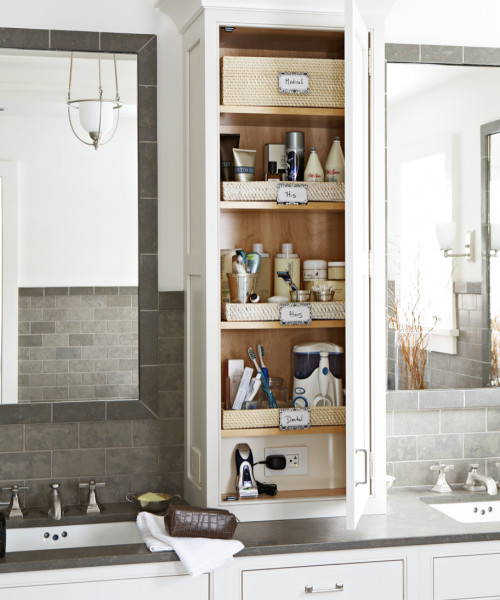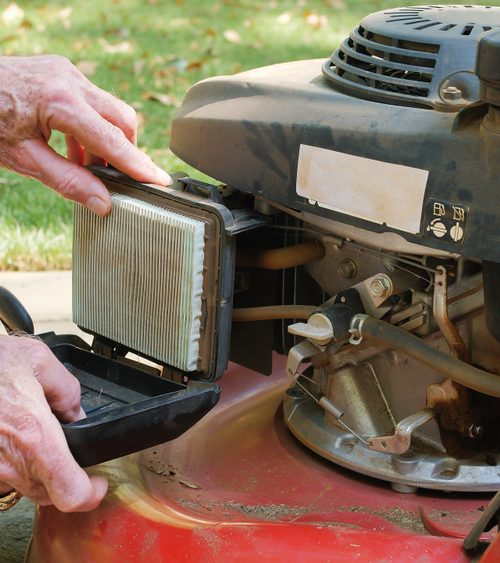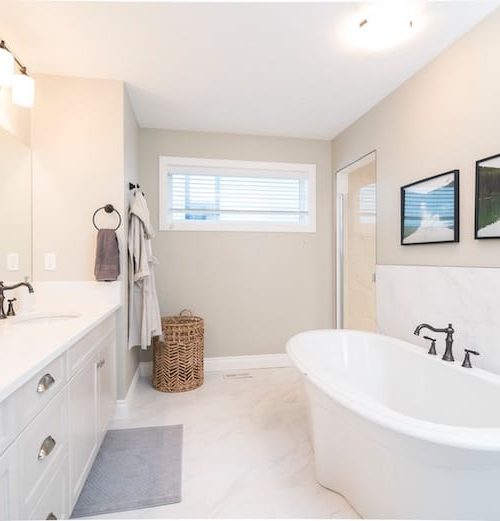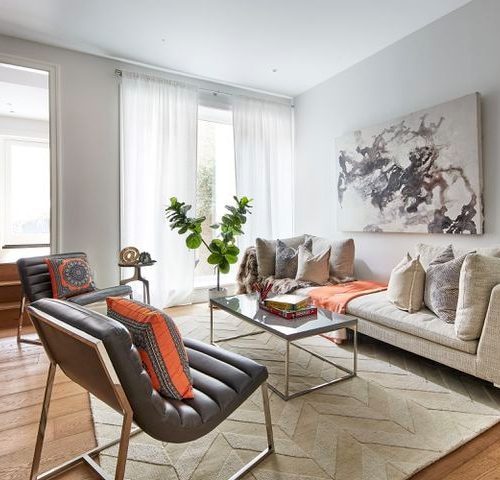Credit: Jenni Girtman
The common area of the village has a fire pit and is planted with blackberries, tomatoes and other herbs, fruits and vegetables tended to and consumed by the eight home owners. The recently completed Cottages at Vaughan are fully occupied with residents who live in the tiny homes in Clarkston on Monday, July 19, 2021. (Jenni Girtman for The Atlanta Journal-Constitution)
By Zachary Hansen, The Atlanta Journal-Constitution
Troy Warren for AtlantaNewsAndTalk.Com
Georgia’s first tiny home community, which aims to be a proof of concept for micro living, quickly sells out
Rich Pasenow was in his dentist’s office three years ago when he noticed HGTV playing on a nearby TV.
The channel was showcasing tiny houses, where people transform small buildings the size of trailers into curated, picturesque living spaces. Pasenow had never seen anything like it.
“I thought to myself, that’s exactly what I need right now,” he told The Atlanta Journal-Constitution.
Fast forward to June 2021 and he was moving into the smallest home in Georgia’s tiniest neighborhood. Pasenow is among eight homeowners who live at the newly completed Cottages on Vaughan, a group of 250- to 550-square-foot standalone homes that occupy a half-acre in Clarkston.
The first-of-its-kind project is a progressive experiment by the city and the MicroLife Institute, a nonprofit that preaches the benefits of modest living spaces. Will Johnston, the organization’s founder and executive director, said he hopes the tiny homes will influence others to give the concept a chance.
“Developers might need to think differently how we build in the future,” Johnston said. “I just see so many people in this mindset of wanting to have this lifestyle.”
Despite being built and marketed amid the COVID-19 pandemic — when many people yearned for more living space due to shutdowns and quarantines — all eight homes sold by the time the community held its ribbon-cutting ceremony last weekend.
Large residential developers remain skeptical that tiny homes will grow beyond an ultra-niche market. But some designs, such as the Cottages on Vaughan, have piqued their curiosity.
“There’s a lot of creative ideas out there,” said Steve Brock, founder and president of Brock Built Homes. “I haven’t seen something that the market has just locked onto or fell in love with yet.”
‘A little radical at the time’
Johnston was the AJC’s manager for community and customer engagement before leaving in 2013 to take a backpacking trip around New Zealand. He sold most of his belongings, which he called a freeing experience.
“Sometimes people don’t realize that possessions own you,” he said.
When he returned to Atlanta, tiny homes had become trendy among TV audiences. FYI’s “Tiny House Nation” and HGTV’s “Tiny House Hunters” brought creative small spaces into people’s living rooms, which were sometimes larger than the homes they were viewing.
Johnston said the concept clicked with him, leading him to create the MicroLife Institute. He would meet then-Clarkston Mayor Ted Terry, and the idea for the first tiny home community in Georgia began to gain traction.
“This may be a little radical at the time, but it was definitely innovative, and it was clear that it was something that we needed to look at,” Terry said. “So I was interested in being the pilot, being the Guinea pig.”
Clarkston had to update its zoning code in 2017 to allow for the tiny pocket neighborhood, located roughly a mile from the city’s downtown. The eight homes and common greenspace areas are located on the same half-acre plot.
Terry, now a DeKalb County commissioner, said he’d like the county to reevaluate its code to allow for similar projects, and he encouraged other municipalities to explore their options.
“Now that there’s a completed project, people can see and feel and touch and walk through and experience what the vision is,” he said. “I think that lends a lot to elected leaders and community members to fully understand what we’re talking about.”

Clarkston’s current mayor, Beverly Burks, added that housing options are needed in all metro Atlanta communities, especially in diverse cities.
“I think this would be a wonderful neighborhood to have in many of the metro areas, because it allows people who want to be first time home buyers to be able to afford to buy a home,” she said, adding that they’re also downsizing options for seniors.
Costs of downsizing
Johnston and Pasenow were among five early adopters to purchase houses in the Clarkston community.
“It takes less than 10 minutes to clean,” Johnston said of his 492-square-foot unit. “Everything has a place, and I know when I can’t buy anything else because no more can be brought in.”
The final homes, which were all about 550 square feet, sold at market price over the past three months. They sold for between $190,000 and $201,000.
Small homes, while cheaper overall, cost more per square foot because they still include the most expensive parts of a house, such as kitchens, bathrooms and basic amenities. Brock said that’s a challenge of building small homes.
“The bigger the house, the lower the per square foot price is to build it because of the economics of those fixed costs,” he said.
The largest home at the Cottages on Vaughan sold for roughly $365 per square foot. That’s nearly double the price per square foot compared to Atlanta homes put on the market in June, according to Realtor.com.
Cost of Downsizing
Since the most expensive parts of a house can’t be removed when downsizing, smaller homes generally cost more per square foot than larger homes.
Realtor.com provided the median square footage for Atlanta homes listed for sale in June, while Clarkston’s figure represents the median square footage for all homes in the city.
Pasenow bought his home for about $448 per square foot, which also included an $8,000 solar panel upgrade. He’s turned the joint living room and kitchen into a home office, where he works as an information technology project manager for The Weather Channel. The bedroom has enough space for a queen-sized mattress and nothing else, but he said that’s all he needs.
“The sense of community, the way these cottages are laid out, I see my neighbors everyday and I talk to most of them everyday,” he said, adding that he’s thrilled with his new home.

Future muddled by hot housing market
Johnston said his organization created a newsletter to gauge interest in micro living. They received more than 1,500 responses, which he said shows there’s more interest in tiny houses than one might expect, especially given last year’s coronavirus shutdown.
“The interest of just this project alone shows there is a huge market, maybe not always necessarily for 500 square feet, but between the sweet spot of 500 to 1,000 square feet,” he said.
While all eight homes in the Clarkston community sold quickly, it’s tough to gauge whether that’s due to growing interest in tiny homes, the soaring housing market or a combination of both.
“There’s an undersupply of homes, especially new homes,” Brock said. “So it’s hard to say that (people want more space) because we’re not in a market where people are differentiating … It gets put on the market, and it’s sold within a couple of days.”
Clint Dixon, a Republican state senator from Gwinnett who serves as acquisitions manager for Chafin Communities, said he initially thought tiny homes were a passing fad. But he said he can easily see projects with hundreds of lots dedicating a few to smaller homes.
“This would be more of a target toward your millennial buyers that aren’t looking for large square footages,” Dixon said.
Terry said he’s pitched similar ideas to developers and other cities. Clarkston has a second small home community in the works called Parkhaven — 37 cottage-style homes across a six-acre lot near Milam Park. That project, developed by Southwych Homes, remains in the planning phase.
“We have people in DeKalb and in metro Atlanta who want this type of housing option,” Terry said.
In Other NEWS




































